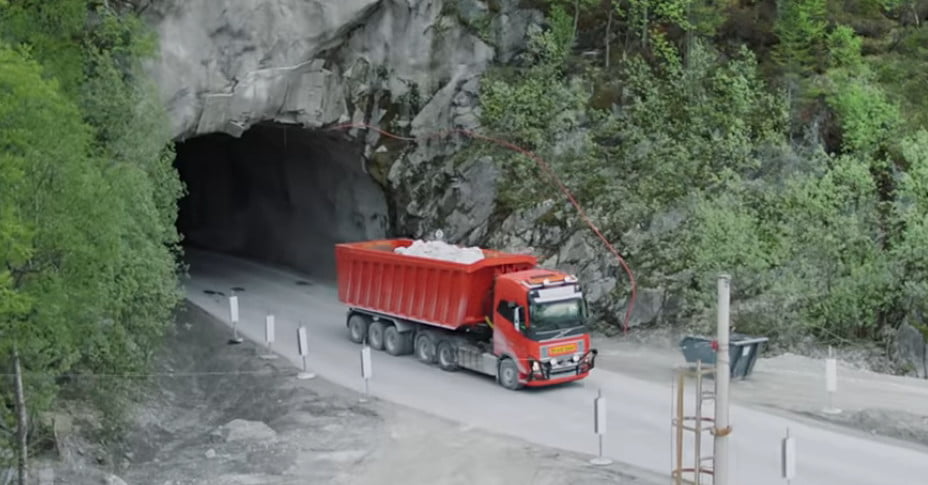Volvo’s Self-driving Trucks Are Ready to Start Work at a Mine in Norway
Volvo has taken a significant step forward with its self-driving truck technology after inking its first-ever commercial deal that puts its autonomous vehicle — or six of them, to be precise — into action.
The Swedish automaker has signed an agreement with Norwegian mining firm Brønnøy Kalk that will see driverless Volvo trucks transport limestone along a three-mile route between a mine and a port.
Testing of the setup with a safety driver has already started, and the system is aiming to become fully operational some time in 2019.
As you can see in the video above, when the autonomous truck reaches the mine, it’s filled up with the crushed limestone. It then follows a predetermined route along a road that takes it through several tunnels until it reaches the port, where it automatically transfers its load onto a waiting ship.
Volvo has already tested its autonomous truck technology for sugar cane harvesting in Brazil, and refuse collection in Sweden. But with its first commercial effort, Volvo is launching a platform that lifts the burden of expensive truck purchases, instead offering a full transportation service that charges according to each ton of limestone successfully delivered.
“It’s exciting to reach this point where we introduce autonomous solutions,” Sasko Cuklev, director of autonomous solutions at Volvo Trucks, said in a release. “By working in a confined area on a predetermined route, we can find out how to get the best out of the solution and tailor it according to specific customer needs.”
Cuklev added, “This is all about collaborating to develop new solutions, providing greater flexibility and efficiency, as well as increased productivity.”
Claes Nilsson, president of Volvo Trucks, suggested its system has the ability to “meet the challenges of our customers both in terms of safety, reliability, and profitability.”
Admittedly, the short, uneventful route is hardly a demanding one for Volvo’s driverless truck, but this is exactly how we expect to see autonomous-vehicle technology gradually edge its way into real-world operations. Predetermined routes in closed areas, which besides trucking operations can also include shuttle services, provide an excellent testbed for the technology, while at the same time allowing companies to launch full-fledged services — like Volvo’s. In a similar way, the widespread use of driverless cars on public roads is expected to come first in the form of robot taxis and delivery services for meals and groceries.




